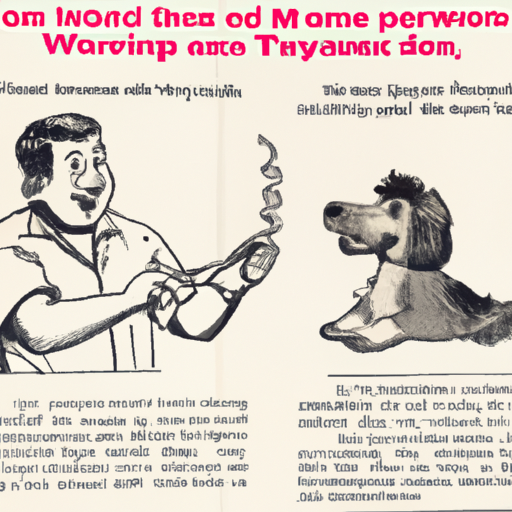As a pet owner, the well-being of your little companion is of paramount importance. From their nutritional needs to their physical health, every aspect requires meticulous care and vigilance. One such aspect is the prevention and control of parasites, specifically tapeworms in dogs. Tapeworms are a common problem in dogs, and they can cause a range of health issues if not promptly addressed. In this comprehensive guide, we will delve into everything you need to know about tapeworms in dogs and how to treat them effectively.
Table of Contents
- Understanding Tapeworms
- Symptoms of Tapeworms in Dogs
- Diagnosis and Treatment
- Preventive Measures
- FAQs
Key Takeaways
- Understanding the nature of tapeworms and their lifecycle is crucial in combating them.
- Early detection is key – recognize the common symptoms of tapeworms in dogs.
- Treatment involves proper diagnosis followed by appropriate medication.
- Preventive measures are paramount in avoiding future infestations.
- Regular vet check-ups and a good hygiene routine can help keep your pet tapeworm-free.
Understanding Tapeworms
Tapeworms are flat, ribbon-like worms that attach themselves to your dog’s intestines. They are a type of intestinal parasite that can be quite harmful to your pet’s health. There are different types of tapeworms, but the most common one found in dogs is the Dipylidium caninum, which is transmitted through fleas.
Understanding their lifecycle is vital in their prevention and control. The lifecycle of these parasites begins when their eggs are ingested by flea larvae in the environment. The eggs then develop into cysticercoids (the larval form of the tapeworm) within the flea. When your dog swallows an infected flea while grooming, the tapeworm hatches in your dog’s intestines and attaches itself to the intestinal wall. Over time, the tapeworm grows and releases segments filled with eggs into your dog’s feces, thus completing the lifecycle. For more detailed information about tapeworms, you can visit the American Kennel Club’s comprehensive guide.
Symptoms of Tapeworms in Dogs
Signs that your furry friend might be infested with tapeworms include:
- Visible segments of the worm in your dog’s feces or on their rear end
- Scooting or dragging their rear across the ground
- Excessive licking or biting at the anal area
- Weight loss despite a good appetite
- Changes in appetite
- Dull coat or other signs of poor general health
For an in-depth look at symptoms and signs of various common dog ailments, including parasites, check out this useful health guide on One Top Dog.
Diagnosis and Treatment
If you suspect that your dog has a tapeworm infection, it is essential to seek professional help. Your vet will typically diagnose a tapeworm infection by finding segments of the worm in a stool sample. Treatment typically involves the administration of praziquantel, a drug that kills the tapeworms. This medication is generally given orally and works by forcing the tapeworm to lose its grip on your dog’s intestines, after which it is eliminated in your dog’s stool.
Remember, the right medication can only be prescribed by a veterinarian after a proper diagnosis. There are various treatments available for parasites in dogs, so understanding the right one for your pet is essential. For more information, you might find this article on parasite treatments helpful.
Preventive Measures
The best way to deal with tapeworms is by taking preventive measures. These include:
- Regular flea control: Since fleas are the primary carriers of tapeworms, controlling them is critical. There are many flea control products available, some of which can be found here.
- Regular vet check-ups: Routine vet visits can help spot and diagnose a tapeworm infection early.
- Maintain good hygiene: Regularly clean your dog’s bedding and living area, and promptly pick up and dispose of their feces.
- Avoid raw meat: Feeding your dog raw or undercooked meat can increase the risk of tapeworm infection.
FAQs
Q: Can humans get tapeworms from dogs?
A: Yes, although rare, humans can get tapeworms from dogs. The most common way is by accidentally swallowing an infected flea.
Q: How often should I deworm my dog?
A: The frequency of deworming depends on your pet’s lifestyle and the prevalence of parasites in your area. Puppies should be dewormed every two weeks until twelve weeks of age, then monthly until six months of age. After six months, all dogs should be dewormed every three months.
Q: Can tapeworms be prevented?
A: Yes, by maintaining regular flea control, avoiding raw meat, maintaining good hygiene, and regular vet check-ups, tapeworms can be prevented.
In conclusion, tapeworms might be a common problem in dogs, but with the right knowledge and preventive measures, they can be effectively treated and controlled. By keeping a watchful eye on your pet, maintaining good hygiene, and scheduling regular vet check-ups, you can ensure that your dog remains healthy and tapeworm-free.



